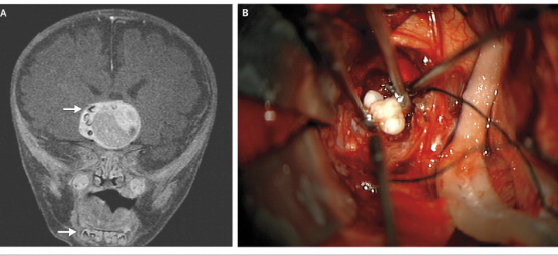Doctors Find Teeth In Baby's Brain Tumor, Plus Other Strange Places Teeth Have Been Found

When a 4-month-old boy's head began to grow abnormally large, doctors were right to assume that something was seriously wrong. After a brain scan revealed a tumor, doctors underwent surgery to remove it. What they found was astonishing — multiple teeth forming inside of his brain due to a very specific type of brain tumor: craniopharyngioma.
The baby boy underwent brain surgery at the University Of Maryland Medical Center, where Drs. Narlin Beaty and Edward Ahn, physicians at University of Maryland Medical Center and Johns Hopkins Children's Center, respectively, determined the boy had a craniopharyngioma, a benign brain tumor that develops near the pituitary gland. The rare brain tumor can grow to be larger than a golf ball. However, unlike other types of tumors, this one does not spread. "It's not every day you see teeth in any type of tumor in the brain. In a craniopharyngioma, it's unheard of," Beaty told Live Science.
Beaty, however, said that this is not the first time that teeth have been found in a human brain, since they've been appeared in teratoma tumors. This was a similar case for a young woman in India. Twenty-three-year-old Nagabhushanam Siva was shocked when she found out that doctors had found two full-formed teeth in the tumor that she had, not in her brain, but in her eye. Also, in 1978, a young man named Doug Pritchard felt a sharp pain in his foot for several weeks before he decided get it checked out. Upon inspection, physicians found a tooth growing in his left foot. However, those tumors, teratomas, contain all the types of tissues found in early-human development — meaning, they have the components of a human child. In contrast, a craniopharyngioma only has one layer.
In the past, whenever scientific abnormalities were discovered, they were often unexplained and many times left untreated. “Before the modern surgical era this child would not have survived,” Beaty said. "He's doing extremely well, all things considered, this was a big tumor right in the center of his brain.”
The boy’s teeth were sent to a lab for further study, because these type of tissue samples can sometimes be useful in the years to come.
The findings were published in the Feb. 27 issue of the New England Journal of Medicine.



























